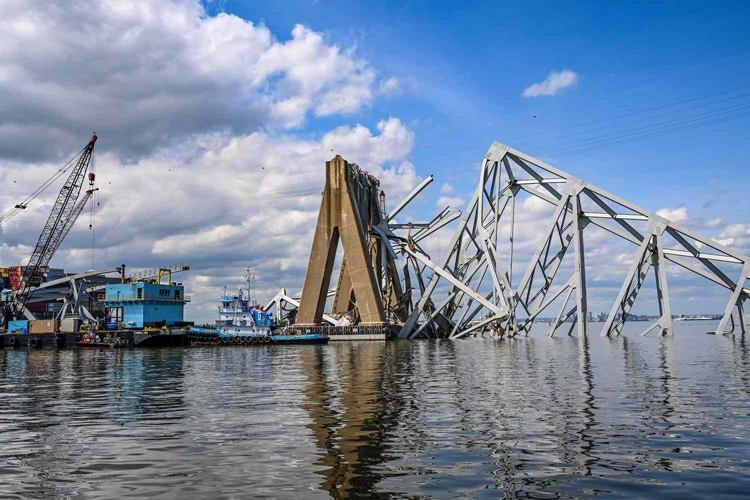In a series of shocking incidents that have rippled through the nation, maritime structures have once again collided with the specter of infrastructure vulnerability. The tranquility of America’s waterways was disturbed by two separate events that have not only disrupted daily commutes but have also raised unsettling questions about the safety and resilience of our nation’s bridges.
In the heartland of America, the Oklahoma State Patrol was forced to shut down a section of South US Highway 59, south of Sallisaw, following a barge that struck a bridge over the Arkansas River. The incident, which occurred without injury, has left the bridge closed pending a thorough inspection. The event, though free of casualties, has nonetheless sent ripples of concern across the state as commuters and officials alike await the verdict on the bridge’s integrity.
The Oklahoma State Patrol said Saturday that it closed a highway south of Sallisaw after a barge struck a bridge over the Arkansas River. Troopers closed South US Highway 59 about 1:25 p.m. after receiving word of the incident and diverted traffic from the area, state patrol spokesperson Sarah Stewart said. The bridge, which crosses the Arkansas River where it enters the Robert S. Kerr Reservoir, will remain closed until it can be inspected, she said. There were no reports of injuries on the highway or the barge, Stewart said
NYPost
A bystander’s video captured the Arkansas incident with palpable shock, as the barge, untethered and uncontrolled, slammed into the bridge. “Holy hell,” an onlooker exclaimed, the urgency in their voice painting a vivid picture of the scene as they urged others to alert authorities. This visceral reaction underscores the immediate sense of danger such incidents provoke, highlighting the fragility of structures we often take for granted.
Meanwhile, the port city of Baltimore was rocked by a catastrophe when the boxship Dali, in a grievous turn of events, collided with the Francis Scott Key Bridge after losing all power and propulsion. The collision resulted in the tragic loss of six workers and left one injured, turning a routine maintenance job into a deadly disaster. The bridge, a lifeline for many, now stands partially collapsed, its future uncertain, as the National Transportation Safety Board (NTSB) scours for answers.
Investigators are zeroing in on the Dali’s electrical system, with early indications suggesting a catastrophic failure that led to the disaster. Jennifer Homendy of the NTSB conveyed to a Senate panel the meticulous nature of the ongoing investigation, as experts dissect the ship’s systems in search of the elusive cause. The clean bill of health for the ship’s fuel and the absence of intentional wrongdoing steer the focus toward a technical malfunction, with the ship’s circuit breakers under particular scrutiny.
Early signs point to the electrical system, Homendy said, and manufacturers’ representatives have flown out to examine the vessel’s circuit breakers in particular. Homendy has also said that investigators are looking at the bridge’s design and its protection from ship traffic. The Key Bridge opened in the late 1970s, when most merchant ships were far smaller, and civil engineering experts have questioned whether the bridge was adequately updated to keep up with modern risks.
The Maritime Executive
The incidents in Arkansas and Baltimore present a stark reminder of the challenges facing America’s aging infrastructure. They bring to light the pressing question posed by Homendy: Are these bridges, many constructed decades ago, equipped to withstand the modern demands of increased and heavier traffic? It’s a question that resonates beyond the immediate tragedies and into the broader conversation about the state of the nation’s transportation arteries.
As Baltimore grapples with a recovery that is expected to stretch into years, and Arkansas awaits the fate of its river crossing, these incidents serve as a stark wake-up call. They beckon policymakers, engineers, and the public to confront the reality of what lies ahead and what must be done to prevent the next unforeseen disaster. It is a call to action, a plea for attention to the silent sentinels that connect our nation, before the next unforeseen strike threatens to sever another link in our daily lives.
